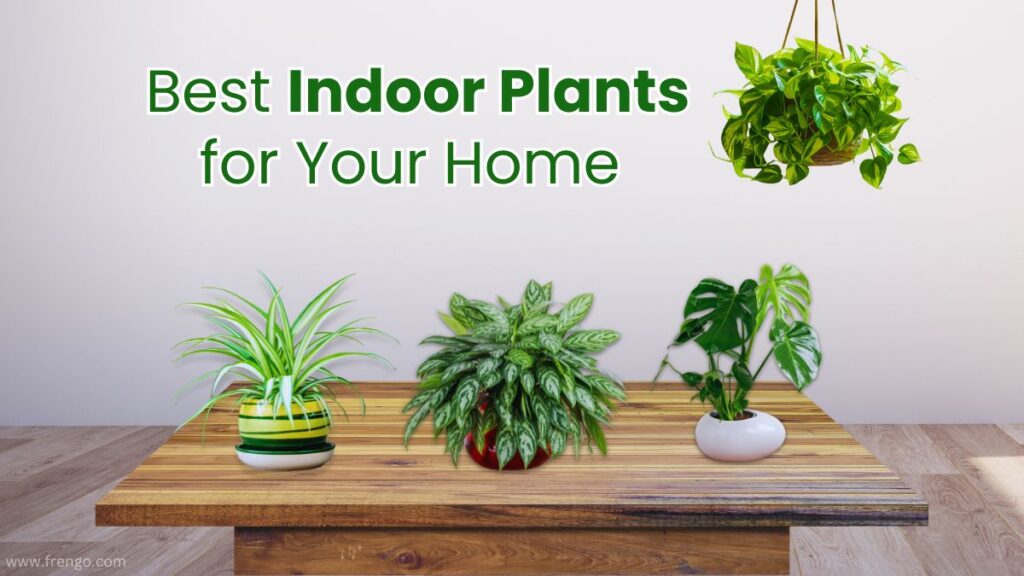That is why indoor plants are so great; they are an opportunity to have a piece of the outdoors in your house. Importantly, not only do they look fabulous, but they can also instantly transform your environment and make it feel cleaner and airier. Some of the best indoor plants for your home include the snake plant, pothos, and peace lily, since they can grow even if the owner does not have a green finger.
It can adapt well to different lighting and requires very little water for it to grow. Also, people noticed that indoor plants have the ability to remove toxins from the air, and that is one more plus. By spreading some plants in your living room, kitchen, and even washroom, the atmosphere of those places will be upgraded to a happy and comfortable one. Well, why not try it and see how these green wonders can improve the appearance of your home?
A List of the Best Indoor Plants for Your Home
Indoor plants are easily the best home additions if you want to transform your living space into a better-looking and healthier environment. For the plant lover or someone who is starting an indoor plant collection, the top 10 indoor plants for your home are listed below.
1. Snake Plant (Sansevieria)
The snake plant, also known as the mother-in-law’s tongue, is one of the favorite choices of many people maintaining an indoor garden. It has attractive green and yellow upright leaves that make it suitable to add to any room. It is quite easy to grow this plant because it does not require much care. It can be placed in rather low-light conditions, for example, under a table; it only needs watering once a few weeks, perhaps.
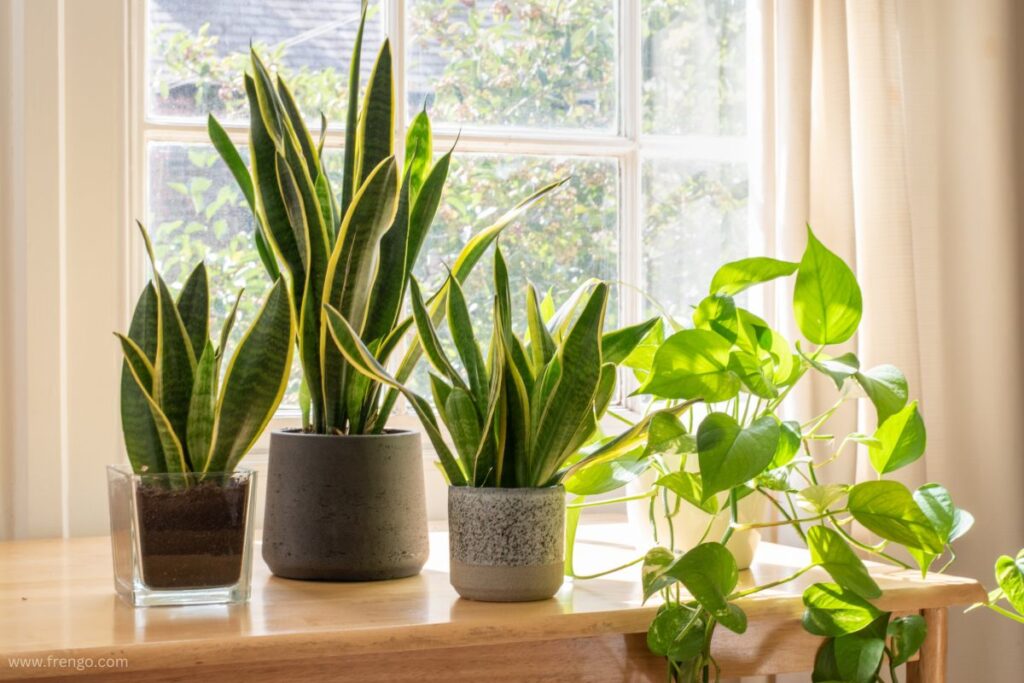
Also, it has the efficiency of purifying the air from chemicals such as formaldehyde, which is used in most furniture, and benzene. Put it in your bedroom or the living room for that class and to boast of fresh air.
2. Spider Plant (Chlorophytum comosum)
Spider plants are popular for their narrow, cascading foliage and tiny white flowers. These plants are very hardy and can easily thrive in a wide range of light conditions, from low to bright indirect light. They make’spiderettes’, which are baby plants that you can duplicate to add to the green forests.
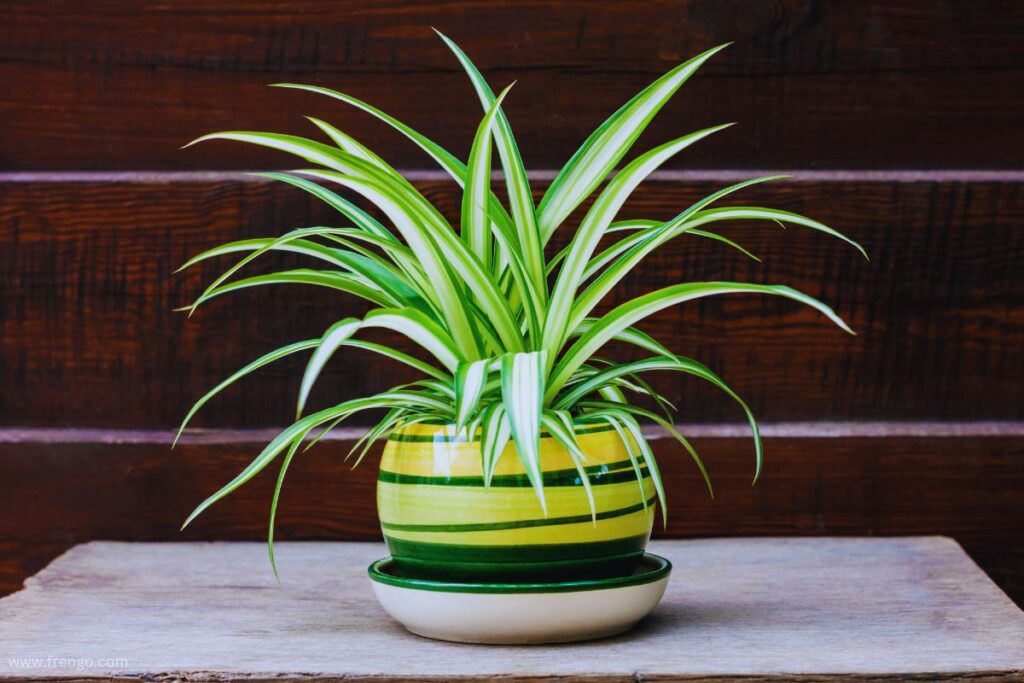
Spider plants are also effective at removing different types of gases that are present in the air. They have to be watered only when the soil has become dry on the surface, which is usually once a week, so they are rather easy to maintain.
3. Pothos (Epipremnum aureum)
Devil ivy/ Pothos is probably one of the easiest plants that can be grown indoors. The plant has trailing features with heart-shaped, bright green leaves that make it good for growth in hanging baskets or on the walls as a climber. Pothos plants can adapt to low to bright indirect light; however, they prefer brightness more than the others and are easy to water.
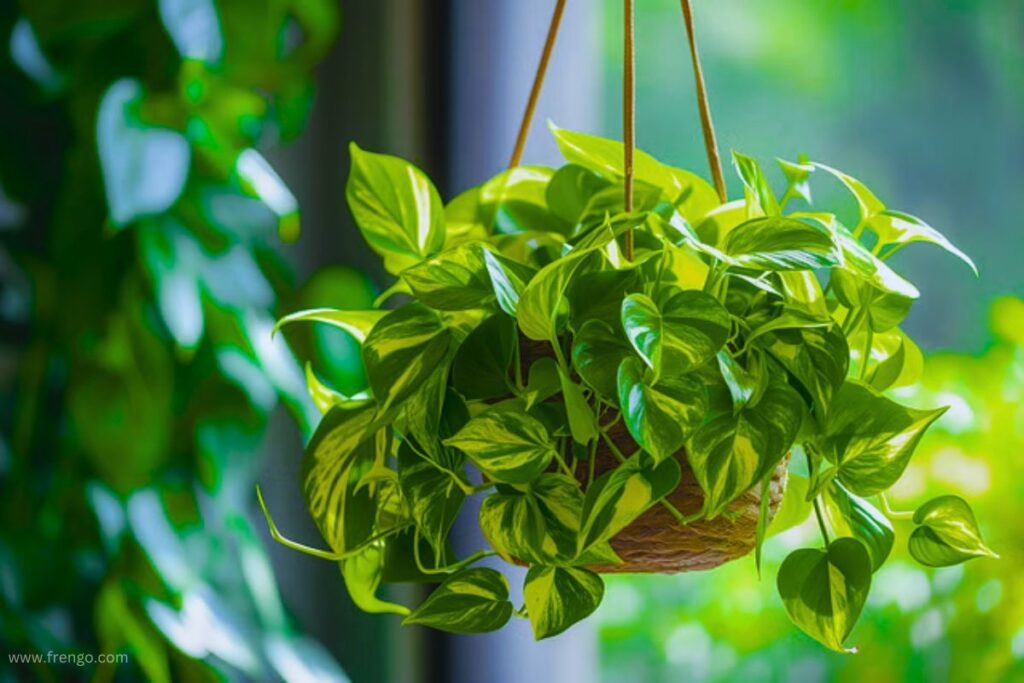
Fertilize it, and water it only when the soil feels dry to the touch, which is about once every 1-2 weeks. Furthermore, it has been discovered to have the ability to purify the air in any environment in which it is planted, so it is safe for the home.
4. Peace Lily (Spathiphyllum)
Peace Lily, There is no doubt that the peace lily has beautiful, dark green leaves and amazing white flowers. This plant is famous for its adaptation to bright light, so it is perfect for offices and partially shaded areas of your house. They are also very good at air purification since they remove common air pollutants such as ammonia and formaldehyde from the air.
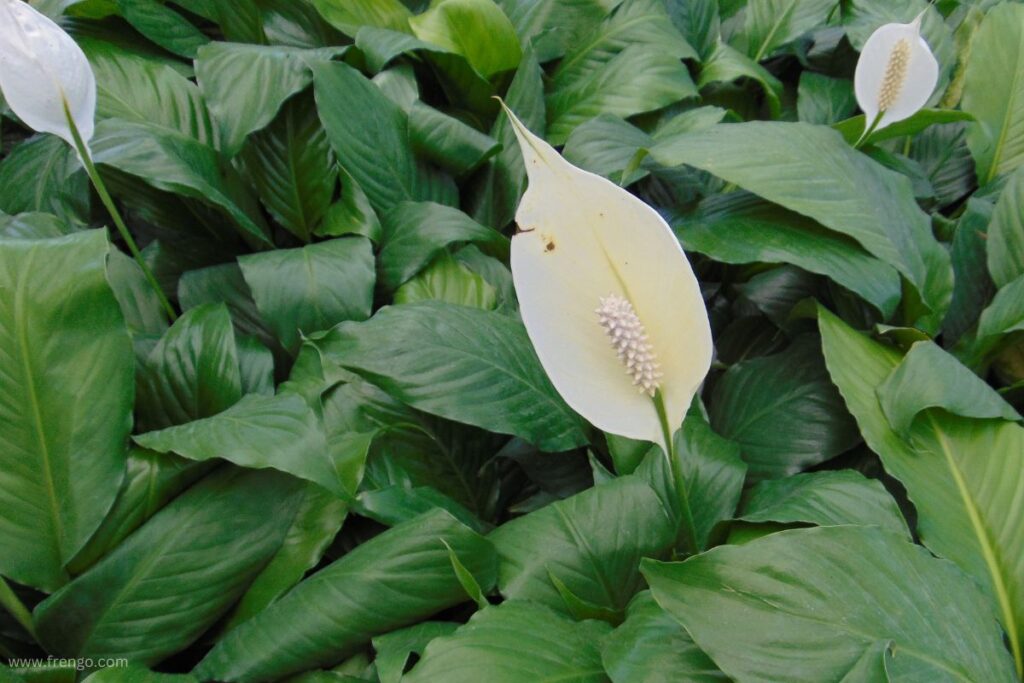
They prefer constantly wet soil but will not punish you if you sometimes overlook to water them. For the most part, they require a watering session once a week, on average. The beauty of the peace lily makes it quite elegant, which gives any room a more classy look.
5. ZZ Plant (Zamioculcas zamiifolia)
These plants are called ZZ plants because of their elliptical, feather-like leaves and their ability to survive almost in any condition. It has low light, low humidity, and watering requirements, so it is suitable for a person who has no time to commit to the plant’s care or for someone who has little to no knowledge of how to take care of a plant.
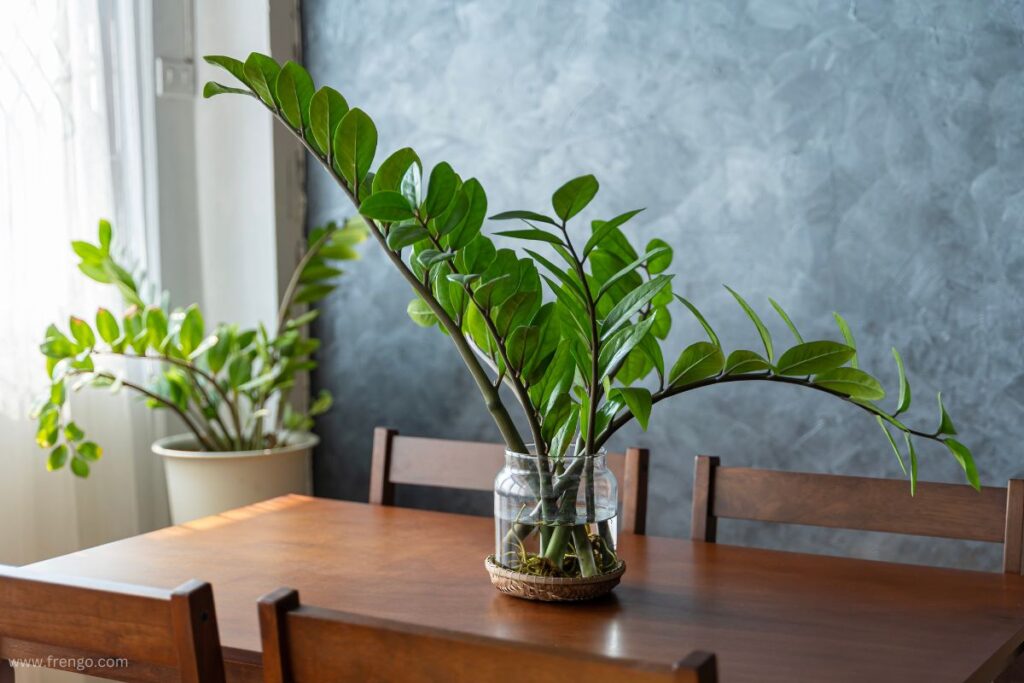
It is also important that ZZ plants be allowed to dry out completely between waterings, which means that it may only be necessary to water a ZZ plant once a month. This makes them easy on interior décor, as they have a stylish and robust look.
6. Aloe Vera (Aloe barbadensis miller)
It is not only a beautiful plant that can be added to home décor but also has quite many health benefits. It has large leaves with an aqueous gel, which becomes useful in case someone wants to treat a minor injury. Aloe vera plants need bright light but not direct sunlight and should be watered deeply but less often, with the soil dry between waterings.

In most cases, the watering is done every three weeks since the plant is adapted to desert conditions. Great design with an aesthetic look that, though overly curved, gives it a unique modern touch when placed in any room.
7. Rubber Plant (Ficus elastica)
The rubber plant is a beautiful indoor plant with large, shiny leaves that appear in dark green, purple-brown, and with different types of blotches. It grows best in bright, indirect light and requires moderate watering; it should dry out slightly between waterings, every 7 to 10 days.
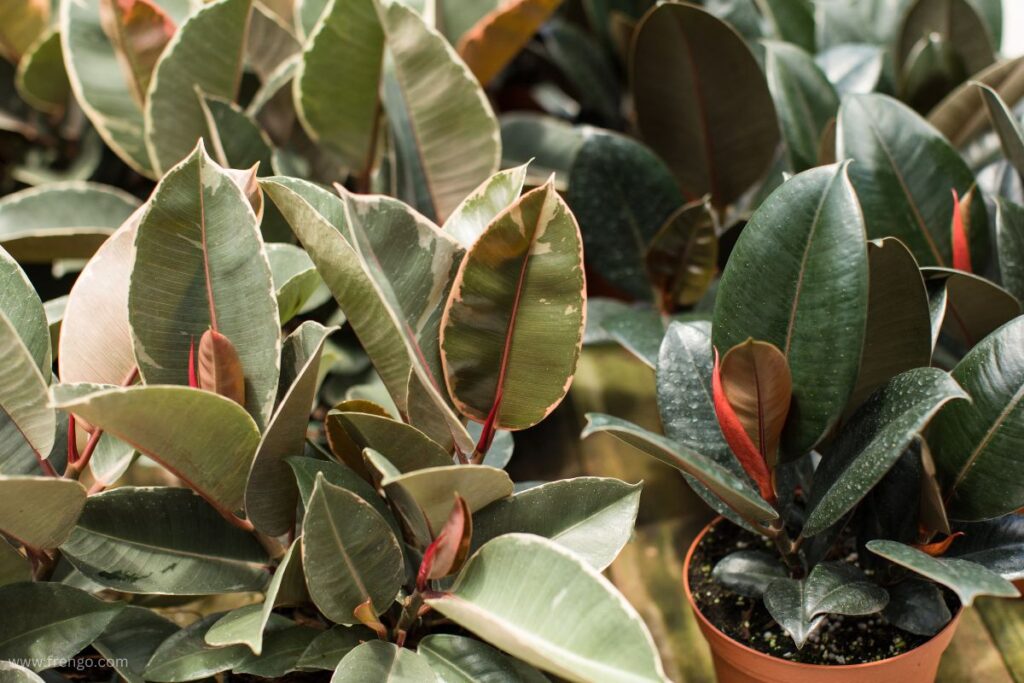
The rubber plant, for instance, may grow to some impressive height, which makes it a perfect centerpiece for a living room or office. It also has the potential to enhance the quality of air contained in homes, thanks to its strong stems.
8. Boston Fern (Nephrolepis exaltata)
Boston ferns are indoor plants with long, soft leaves that can be very decorative in interiors. Place them in areas with high humidity and oblique light, like the bathroom or kitchen. The watering frequency must be consistent for Boston ferns, as they prefer their soil moist but not waterlogged, which means they are usually watered twice a week.
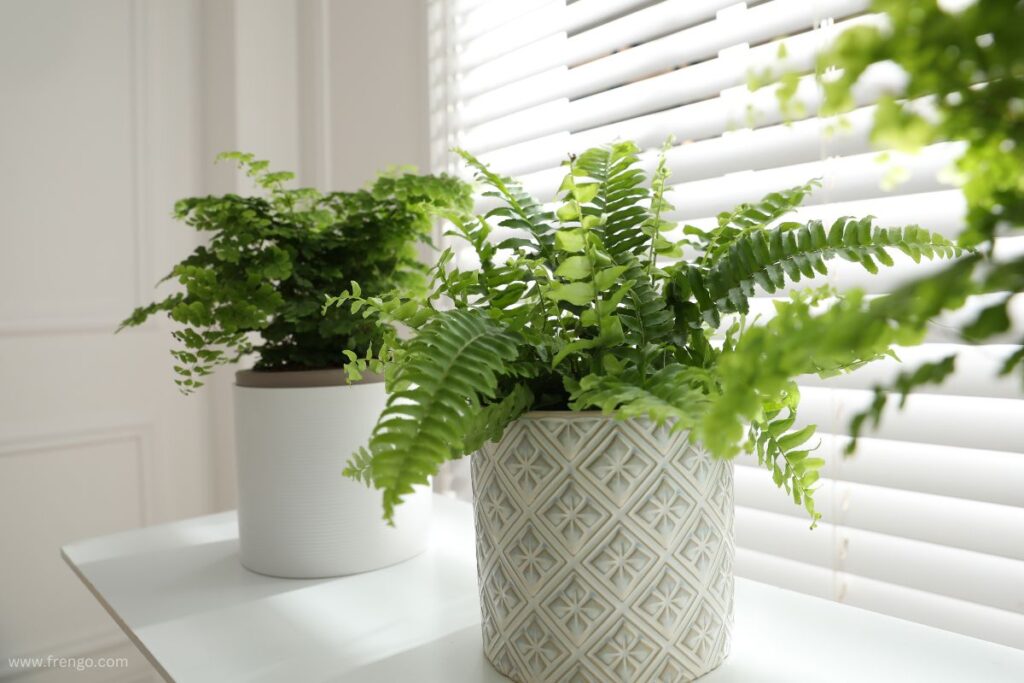
Spraying water on the leaves is also effective in increasing the humidity levels of the plants. Their aesthetic value and looks have the feel and appearance of things found in nature; thus, they are soft and would give your home a natural feel.
9. Monstera Deliciosa
Monstera deliciosa is also referred to as the Swiss cheese plant due to its large, light green leaves with holes. It prefers bright, indirect light but can survive in a low-light area of a room or house. Monstera should be watered when the top layer of the soil is dry, and this can be done every 1-2 weeks.
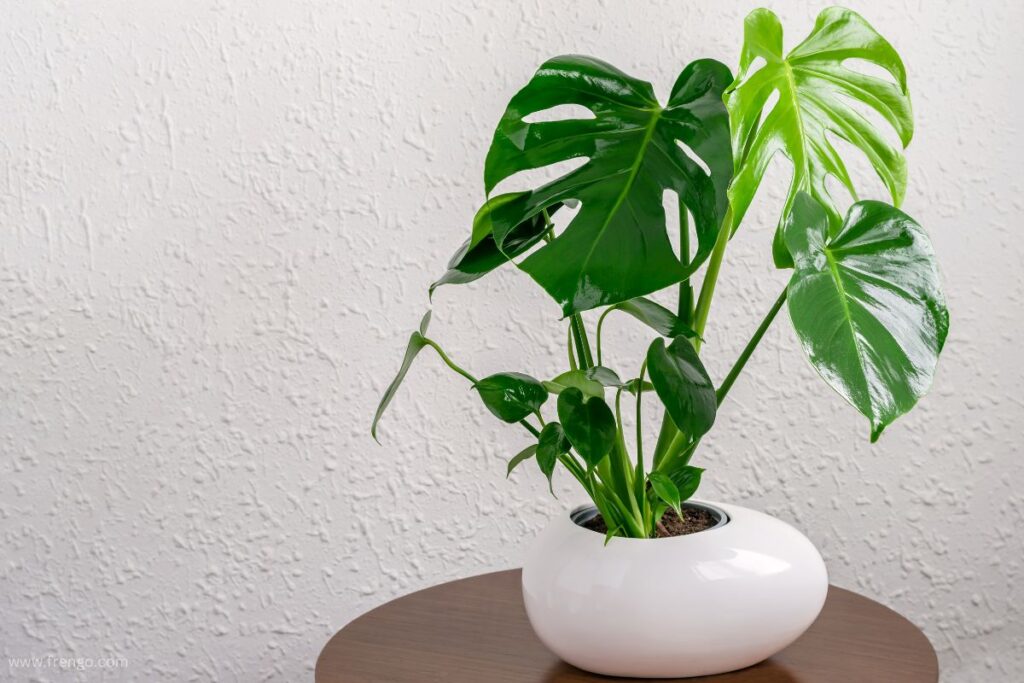
It has a very vibrant look, which, when placed in any home, makes that area look more attractive. It is a very big plant, and when placed in your home, it gives it more of a jungle look.
10. Chinese Evergreen (Aglaonema)
Chinese evergreens are appreciated for their striking foliage, which can be green, silver, pink, or red. They are very hardy and can grow successfully under very low light; this makes them ideal for areas of the house that have less light. Chinese evergreens should be consistently watered, although the soil should not be allowed to dry out completely.
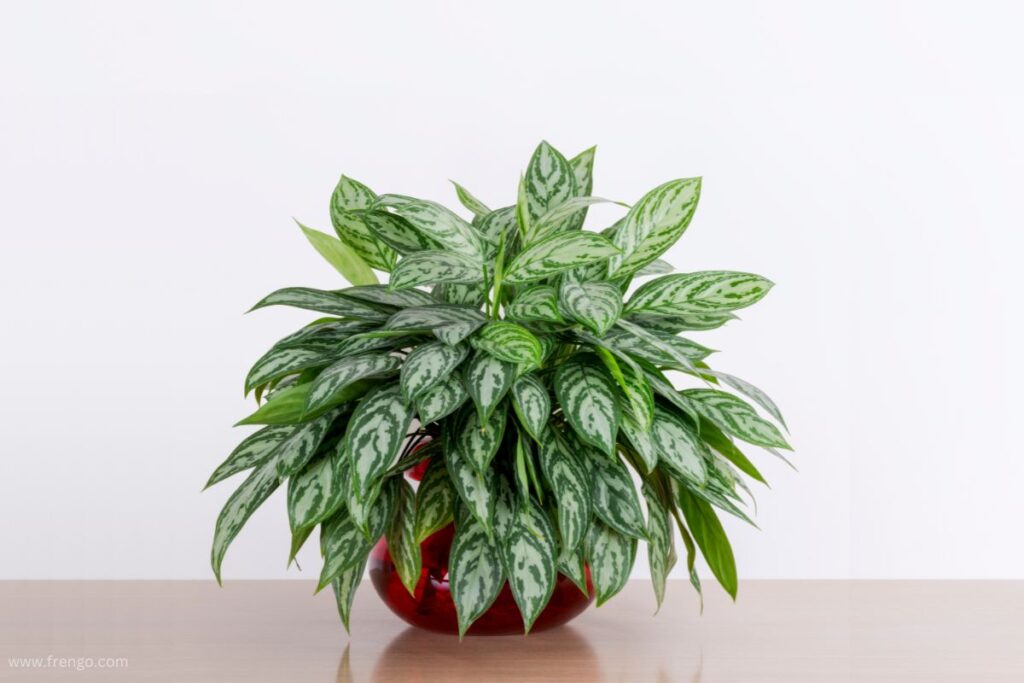
Once a week is typically enough when it comes to the watering of the plants, or even less depending on the conditions. These plants are very easy to care for and give a pop of green and color to the indoors.
Caring for Your Indoor Plants
While these plants are known for their resilience and ease of care, here are some general tips to ensure they thrive:
- Light: A great part of the indoor plants like medium and low light. Do not expose them to direct sunlight because it causes the leaves to burn. For example, if the plant requires more light, it can be placed near a window with less direct sunlight or use additional artificial lighting.
- Watering: Overwatering is one way it is done. To avoid overwatering, ensure you water your plants when the upper soil layer is dry to a depth of about one inch. Draining pots will also not allow water to pool at the bottom part, which causes root rot.
- Humidity: Most tropical indoor plants, for example, prefer high-humidity conditions for their growth and development. You can also try misting plants, using a humidifier, or placing a tray of water near the plants to raise the humidity.
- Fertilizing: Feed indoor plants during the growing seasons, which are in spring and summer. Fertilize your plants with a balanced, water-soluble fertilizer every 4-6 weeks. Just like the fingernails, it is important to reduce the feeding when the growth rate slows during the fall and winter.
- Cleaning: The leaves of indoor plants can get covered up with dust, which hinders light from getting to the plant, thus diminishing photosynthesis. To maintain cleanliness, it is advisable to use a damp cloth on the leaves now and again after a few weeks.
- Repotting: One thing that may happen as your plants continue to grow is that they may become too large for the pots they are in. A technique involves repotting the plant every 1-2 years in a new pot; this assists in replacing the old dirt, and the roots need space to grow as well. Select a pot one size larger than the existing one and repot using fresh soil.
Benefits of Indoor Plants
Indoor plants do more than just beautify your home. Here are some benefits of having them around:
- Air Purification: Many kinds of indoor plants are capable of filtering toxins from the air, thus enhancing the quality of the air within an indoor environment. It can remove formaldehyde, benzene, ammonia, and other harmful gases from the air, thus making the air in your home cleaner.
- Stress Reduction: Fresh air from the trees can lower stress and anxiety levels. Hearing the sound of a waterfall or trees swaying and feeling the fresh air can help you get in a better mood.
- Improved Focus and Productivity: Research has revealed information that would indicate that workplace plants cause enhanced levels of focus, productivity, and creativity. They make the environment more enjoyable and can encourage and engage the mind.
- Humidity Regulation: Transpiration is the way through which plants give out moisture into the air. This can help control indoor humidity, which is important for your skin, respiratory health, and general comfort.
- Aesthetic Appeal: The use of indoor plants brings life and a natural feel to the interior design of every home. They are available in many different forms, types, and colors, which enables you to arrange the plants and make them look more appealing.
These plants are not only decorative for your home since they help in beautifying it but also work towards making the indoor atmosphere of your home healthier. Here is also a list of plants for both the experienced plant owner and the one who is just starting a new journey.
FAQs About Indoor Plants
Can I place indoor plants near window with direct sunlight?
What are some common mistakes I should avoid when indoor plant lighting?
Why do we need to water the indoor plants regularly?
Also, read more articles:


